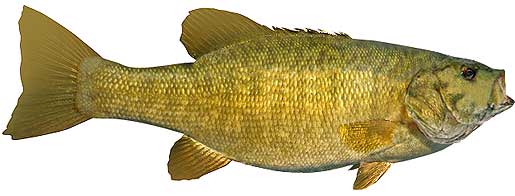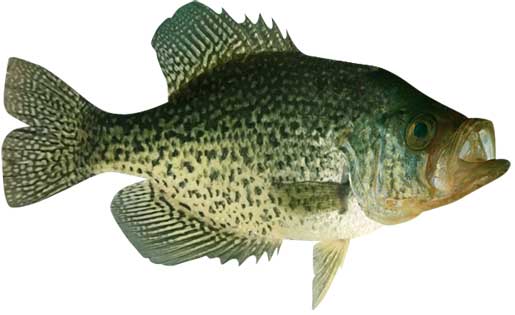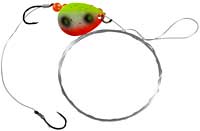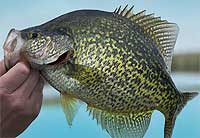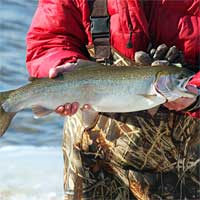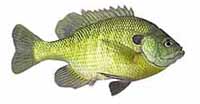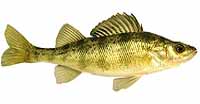Fishing Report For Summersville Lake, WV
AKA: Summersville Reservoir
By Rick Seaman
Last updated on .
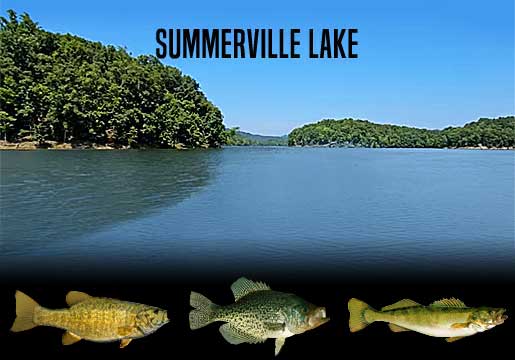
Fishing Reports
Popular Fish Species Summersville Lake, WV
Smallmouth Bass
Current Report: Good To Very Good
FALL. Summersville Lake is widely-known as an exceptional smallmouth bass fishery. As Fall arrives, smallmouth here follow schools of baitfish into coves and bays 10 to 30 feet deep. According to local reports, rocky banks in the deeper sections of the Gauley River arm of the lake, as well as the vast number of rocky points and banks on the main lake have been producing good stringers. This is where jerkbaits, crankbaits, and slow-rolled spinnerbaits, are quite successful. Fishing shallow for smallmouth is often good on cold, windy, cloudy and rainy days.
WINTER. Winter will isolate them around deeper structure, points, flats and creek channels, often suspending in open water above these features. They can generally be found from 25 to 60 feet deep. Tube baits, drop shots and Ned rigs often produce when fished wit a very slow presentation. Here they hold, feeding less frequently, awaiting warmer water to return in Spring.
SPRING. When water temperatures rise into the 50's now, smallmouth have moved from deep wintering spots to shallower water, just outside spawning areas. They feeding heavily in 5 to 20 feet of water at this time, and are typically caught on jerkbaits, crankbaits, tube baits, Ned rigs, and crayfish imitating plastics. Once water warms into the high 50's, they move into shallower water, and create nests in gravel or sand areas, then lay their eggs. Females then move to deeper water and males remain to guard the eggs, and then the fry. After a couple weeks, the males also move to 20 to 30 feet deep, and feed aggressively. Deep-diving crankbaits, tube baits, Ned rigs, plastic worms, spoons and swimbaits are catching smallies during this period.
SUMMER. Smallmouth bass, including a few trophy-size gems, are currently feeding shallow early and late in the day, where they are being caught on topwater, crankbaits, swimbaits, Ned rigs and tube baits. Smallmouth bass here feed on crawfish, gizzard shad, and small sunfish. They prefer rocky or gravel bottom areas, as this is where crayfish live. During the hotter parts of the day, they are being caught on points, humps, and ledges 20 to 60 feet deep. Often these deeper fish are part of a decent-size school of smallmouth. Anglers fishing the Gauley River arm report good catches during the warmer months.
Black Crappie
Current Report: Good
FALL. Baitfish, which are moving into shallow flats, coves and bays, are drawing crappie into these areas. They are feeding heavily in preparation for the cold Winter, in 8 to 20 feet of water. Prime areas include brushy areas in the back of coves, the area where Muddlety Creek intersects with the Gauley River, and around bridge pilings like the ones on Hughes Bridge (Highway 79). Minnows, hair jigs, and crappie jigs, are good options during this feeding marathon. Late fall starts the migration deeper, toward winter holding areas, for both crappie and baitfish. Small flutter spoons, fished in 15 to 25 feet of water, are a good option during this transition
WINTER. Once the shallows start cooling rapidly, crappie will migrate to deeper holding areas, mostly off shore. At this time they are typically caught using a very slow presentation, in 20 to 40 feet of water. If they are suspending in open water, they often relate to some cover, or structure change, directly below them.
SPRING. In early Spring, crappie begin staging in 2 to 10 feet of water, just outside spawning bays and shallow flats. Coves in the northern-most section of the main lake, near the Summersville Lake State Wildlife Area have brush and a deep creek channel. Local crappie enthusiasts report that minnows catch a lot of fish, as do crappie jigs. Spring is prime time to be on the water, as crappie have moved shallow to spawn. At that time, they are typically caught in 2 to 4 feet of water. Vegetation, docks, brush and wood are where most anglers catch crappie using small crappie jigs or live minnows. After the spawn, crappie typically move outside the spawning area and hold on cover close by, in 10 to 15 feet of water. Once they move even deeper, anglers report success using fish finders and forward facing sonar to locate schools of crappie, which tend to stack vertically around cover. Light tackle, with 4 lb to 8 lb line, is a popular choice.
SUMMER. Water temperatures warm, and crappie fishing is usually pretty good. Now that the spawn is over, and the hot Summer sun is warming the shallows, crappie have retreated to depths of 10 to 25 feet, or embedded in the shade of slightly shallower vegetation. This is a good time to focus around bridge pilings and deeper docks. Anglers are also locating schools of crappie hanging over deep structure and around creek channel edges.
Walleye
Current Report: Fair To Good
FALL. Fall brings cooler temperatures to shallow water, drawing walleye and baitfish shallower. Good reports are showing up from anglers working points and ledges in the area between the Summersville Lake Marina and the Summersville Dam. Starting in this area is a good way to establish ideal depth for the day. Jigs, swimbaits, spoons, crankbaits, jerkbaits, and spinnerbaits are all historically good for catching walleye this time of year. Early Fall finds them in 10 to 25 feet of water. Later in Fall, they move out deeper again. Dragging jigs or worm harnesses with nightcrawlers or leeches, or bottom bouncers, around ledge drop-offs catches walleye fairly consistently. Watch for the bigger walleye to be slightly deeper than the majority of the school.
WINTER. This Winter fishing for walleye was pretty good through the ice. Before, during and after the ice, anglers report catching them in 25 to 50 feet of water, along creek channel edges, rocky humps and ledges. They primarily feed on small fish, staying close to the bottom. After ice-out blade baits, jigs, swimbaits, spoons, deep-diving crankbaits, and worm harness spinners, are all working while deep trolling or slow drifting.
SPRING. Early Spring brings warming water in the shallows, and draws walleye here to feed, especially rocky areas and inlet channels. In Spring work the river area, and anywhere water is flowing in. Here, in 5 to 15 feet deep, they will spawn once the water warms to the mid to high 40's. When they move shallow, bright colored jigs, tipped with minnows or nightcrawlers typically catch them. Spinnerbaits, jerkbaits and crankbaits are also working when walleye are up shallow. Afterwards, they move to 20 to 40 feet deep around points, flats, shoals and ledges, nearby shore, often staying in close proximity to their spawning locations.
SUMMER. Water temperatures rise in Summer, and walleye fishing is good if you can get your bait deep enough. Walleye tend to concentrate in 25 to 40 feet of water, preferring the cooler temperatures. Throughout Summer, early in the morning, and from dusk to long after dark are good times to catch walleye. At those times they move slightly shallower to feed in low-light conditions. Night fishing is often good in Summer, as well. The rest of the time they are cruising flats and creek channel edges, where they are harder to locate. When the bite is slow, grubs and nightcrawlers, fished just off the bottom are catching walleye.
Fishing Video
Fish species to fish for...
Guide to fishing for largemouth bass, smallmouth bass, channel catfish, flathead catfish, black crappie, walleye, rainbow trout, bluegill and yellow perch at Summersville Lake in West Virginia.
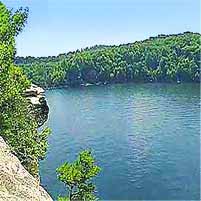 If you enjoy catching and eating freshwater fish, Summersville Lake will fulfill both of your appetites. In April of 2024, the B.A.S.S. Nation of West Virginia tournament was won with nearly a 2 3/4 pound average weight per fish, and the big bass for the event was over 4 1/2 pounds. Tasty crappie and walleye also top the list of favorites. With a surface area of nearly 3,000 acres, this is the largest lake in the state.
If you enjoy catching and eating freshwater fish, Summersville Lake will fulfill both of your appetites. In April of 2024, the B.A.S.S. Nation of West Virginia tournament was won with nearly a 2 3/4 pound average weight per fish, and the big bass for the event was over 4 1/2 pounds. Tasty crappie and walleye also top the list of favorites. With a surface area of nearly 3,000 acres, this is the largest lake in the state.
Primary fish species to catch
Click images for fishing tips and details about each species.
Today's Weather & Forecast
Fishing Boat Rentals
Click here for fishing boat rentals.
Public Boat Launch Ramps & Landings
View a complete list of boat ramps and landings for fishing boats on Summerville Lake.
Marinas
Click here for marinas.
Fishing License
Click here for a West Virginia Fishing License.
Map - Fishing & Access
Check out the WV Dept of Natural Resources fishing guide map of Summersville Lake for further details.
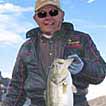 Rick Seaman is a fishing enthusiast with over five decades of fishing experience, a retired tournament fisherman, author of numerous published articles on fishing, and co-author of the book "Bass Fishing - It's not WHAT you throw, It's WHERE you throw it".
Rick Seaman is a fishing enthusiast with over five decades of fishing experience, a retired tournament fisherman, author of numerous published articles on fishing, and co-author of the book "Bass Fishing - It's not WHAT you throw, It's WHERE you throw it".
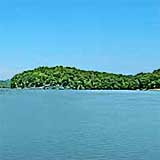 Contact Information
Contact Information
Summersville Lake Marina
1706 Airport Road
Summersville, West Virginia 26651
304-872-1331
Fishing lakes in each state
100725
Summersville Lake, WV Report
WEST VIRGINIA


Information about fishing lakes in West Virginia
Fishing in central WV, for bass, trout, walleye, crappie, perch, catfish and sunfish.


